Myth-Making in the Streets: Garuda Gamana Vrishabha Vahana with Raj B. Shetty
A striking visual in Raj B. Shetty’s Garuda Gamana Vrishabha Vahana (GGVV, 2021) is of a young boy named Shiva begging on the streets of Mangalore, his body smeared with patches of blue and a dirty yellow jute rag tied around his hip. Shiva carries with him his sole belongings—a stick and a plastic bag—which are fashioned like a trident and damaru. The association is early and direct. A few scenes later, the now-grown Shiva (Raj B. Shetty) crushes a man’s skull with a paperweight in a fit of rage. A Purandara Dasa song in praise of Lord Shiva plays as he sits astride his victim. Through the film, Shiva commits repeated acts of violence, breaking out at one point in a Pili Vesha (Tiger Masque) dance in the rain. This dramatic moment is as much a recording of a predator’s victory dance as it is a celebration of the film’s sharply laid out mythological pairings. As Shiva dances his mad Tandava, his adopted brother Hari (Rishab Shetty) stands guard, his revolver poised at their common enemy. Hari, an embodiment of Lord Vishnu, is the antidote to Shiva, with his restraint, ambition and artifice acting as a foil to the latter’s recklessness and innocence. The third figure in GGVV’s (im)mortal trifecta is Bhramaiah (Gopal Krishna Deshpande), a policeman reluctantly thrust into the world of small-time mobsters, corrupt local politics and gang wars, charged with restoring balance amidst threats and betrayals.
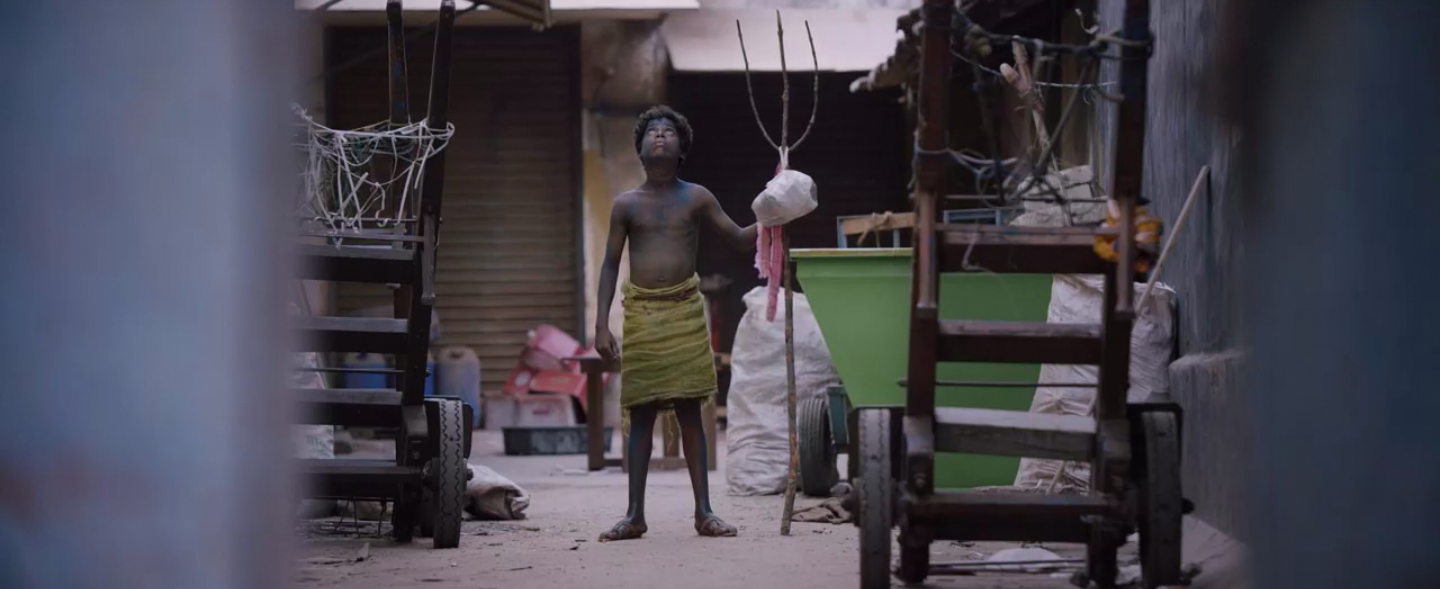
Still from Garuda Gamana Vrishabha Vahana.
On screen, the city of Mangalore centres the narrative of the film. The drama revolves around the Mangaladevi and Kadri temples even as it weaves coastal Karnataka’s folk form Pili Vesha deftly into its scheme of things. Absent are the coastal town’s scenic beaches, as Shetty chose overcast skies and muted colours instead to present this glimpse of the city’s grimy underworld.
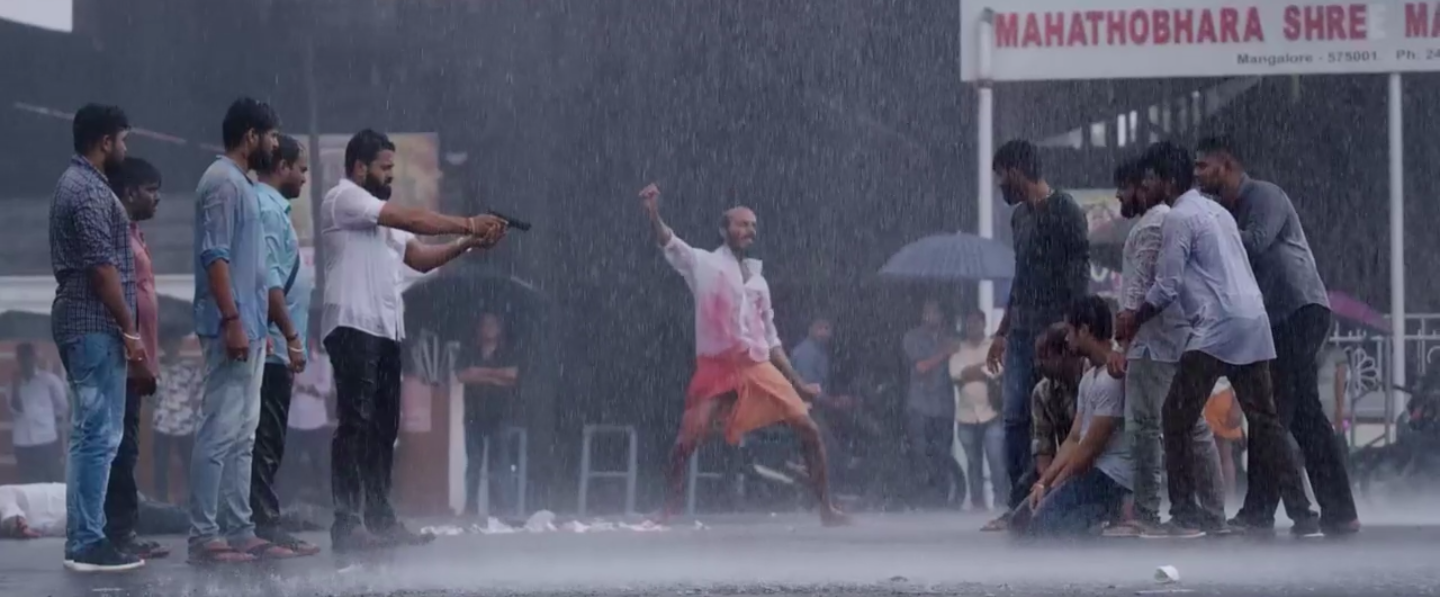
Still from Garuda Gamana Vrishabha Vahana.
In an interview with Raj B. Shetty, we spoke about mythological borrowings for his gangster film, making films in Mangalore and putting its geography, people and rhythm on screen through GGVV and his earlier film Ondu Motteya Kathe (OMK, 2017), a gentle comedy about a bald man’s search for love.
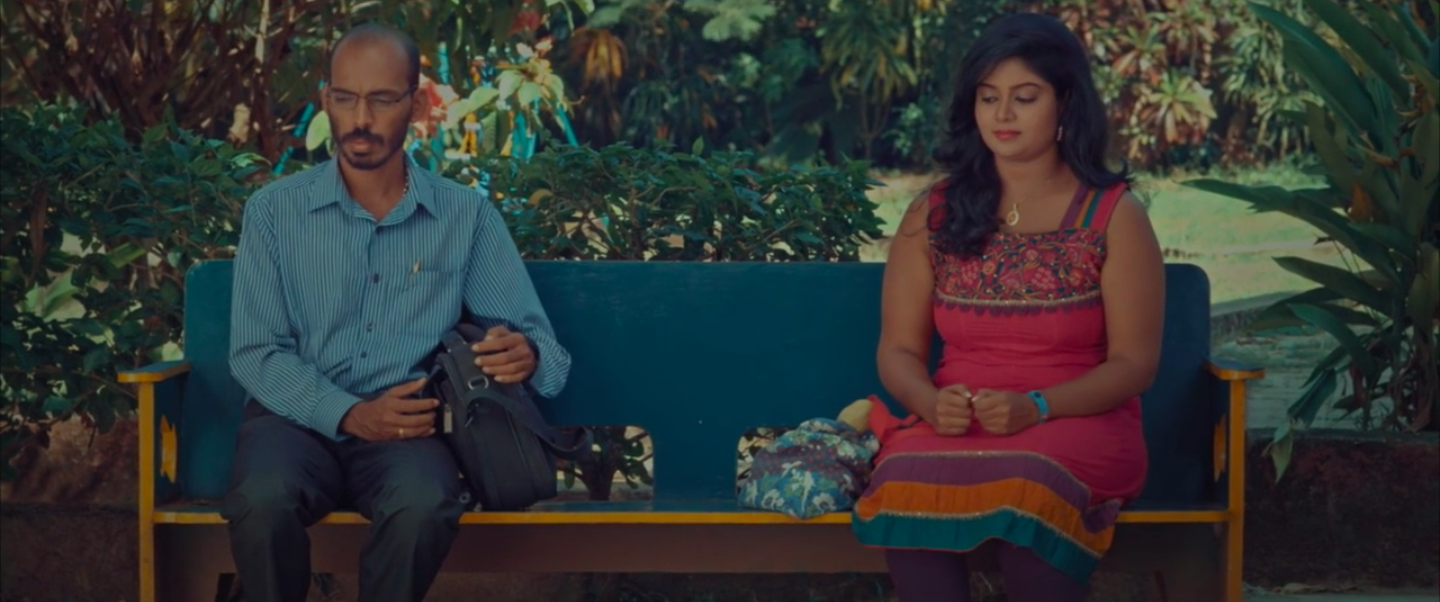
Still from Ondu Motteya Kathe.
Sucheta Chakraborty (SC): You wrote and acted in both of your directorial ventures. Was that an easy transition, or was juggling these different responsibilities difficult? Also, since you have acted in a variety of films helmed by others, is there any aspect of the creative process that you enjoy more than others?
Raj B Shetty (RBS): Ignorance is a beautiful thing. For one to realise that they can or cannot do something, one needs to have conditioning or prior experience. Fortunately for me, I had no prior experience in films. The first film set that I saw in my life was for OMK. Even though I was making a film on the beauty complex, I was not very confident of how I would look on screen. But when I could not find an actor, there was no other option left, so I had to act. There were no directorial decisions that I took on set since they had all been taken before. Every actor should go through rehearsals, and we locked costumes, art property, etc., in advance. I did not realise it was a hard job; the preparations had been made. We love the process of filmmaking so much that intensity is added through the love. We are not in a rush. I always thought I was a writer. After GGVV, I can claim that I equally enjoy direction.
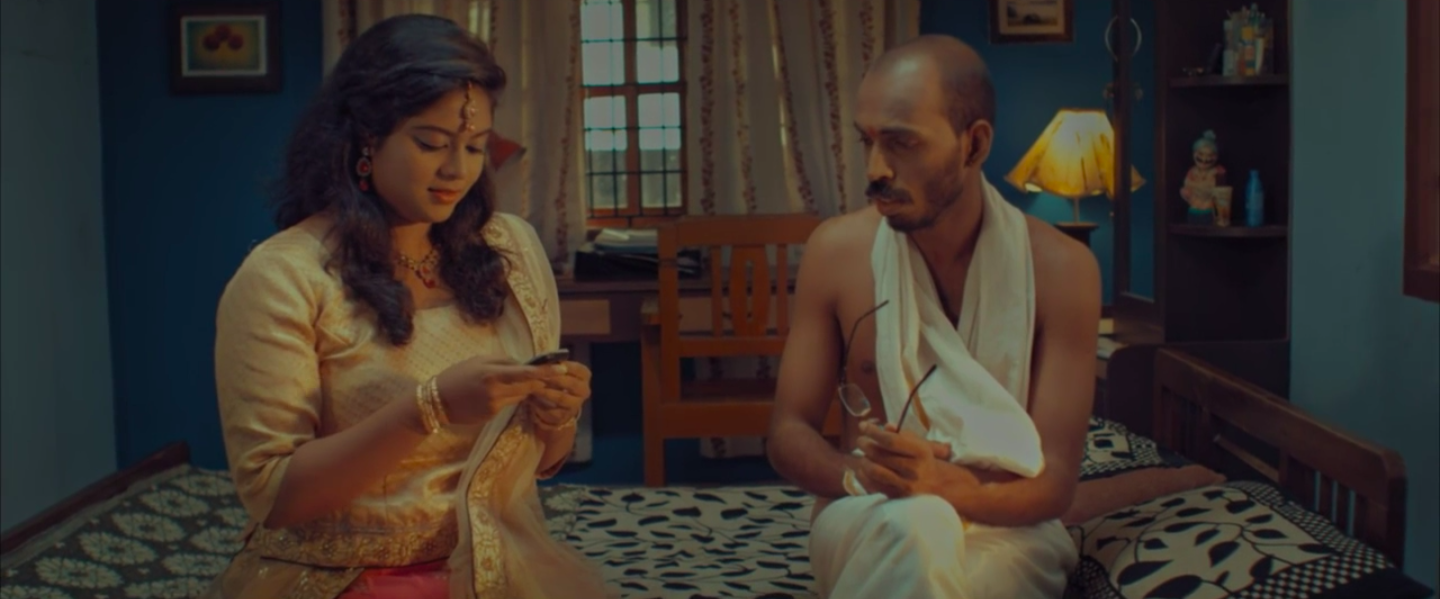
Still from Ondu Motteya Kathe.
SC: In an interview, you spoke about how Mangalore does not have a film culture of its own. Does that make it difficult to make films there?
RBS: It is much easier and it is much more original. [In Mangalore] you are not treated as a celebrity because there is no culture to make people feel bigger than what they are. In a professional cinema set there are hierarchies, which is not present in such cases. When it comes to creative involvement or how you treat a person, hierarchy is something that takes away life from a set. For instance, there will be films made about caste, and all you have in your set is hierarchy, which can affect how sensitive you are as a human being. There is a lot more openness and approachability on sets without hierarchies.
You are in life. When you roam around, people treat you like a regular person. Some people might tell you that they liked your movie but that is where it ends. As one listens to and is around people and culture, one becomes a better writer. In Mumbai or Bangalore, the only people I meet are film people. I discuss cinema with them, but where is the life that would inspire me to create more art? In Mangalore, it might be a little difficult in terms of the process and bringing things together, but that is fine. It is fine to lose a little when you can gain so much.
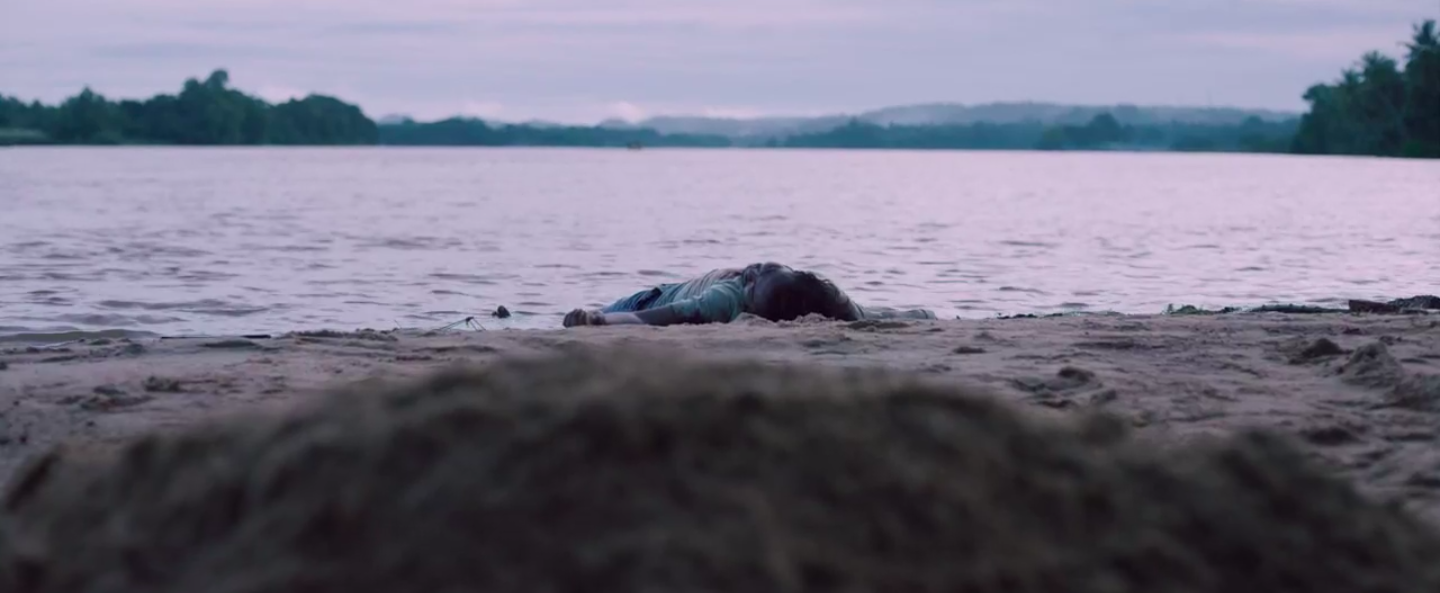
Still from Garuda Gamana Vrishabha Vahana.
SC: Both of your films are set in Mangalore, a place that has not been seen on screen a lot. These are of course two different films with distinct aesthetics, but were there specific ways in which you wanted to present the city? I noticed that you steered clear of any glamorisation, avoiding picturesque shots of Mangalore’s beaches and barely showing the coastline. In fact, when you do show sand and water, it is to reveal a dead body…
RBS: When cinema glamorises a place, you see it as a tourist—and the tourist only sees what the government wants them to see. It is not the city itself but an ideal thing created for them to see and go back. There is life and rhythms that are only known to the person who stays there.
In one city there can be a thousand and one lives that may be unrelated. For example, OMK’s life is not related to the life of GGVV, but they both occupy the same city, maybe at the same time, but they do not know of each other. In Mangalore, people think in Tulu and speak Kannada. They sound Tulu but are speaking in Kannada; we call it Mangalore Kannada. The people here are softer—that is the reason there is a lot of space for silence in my films. If I make the same movie in Bangalore, I would not be very authentic because the parts of that city we know do not have silence. But there is silence present, like the urban loneliness of an IT guy… When I capture Mangalore, it is always about how people move and talk, what the city and its rhythm are like. In that rhythm I create stories… [to give] a sense of the city’s lived experience.
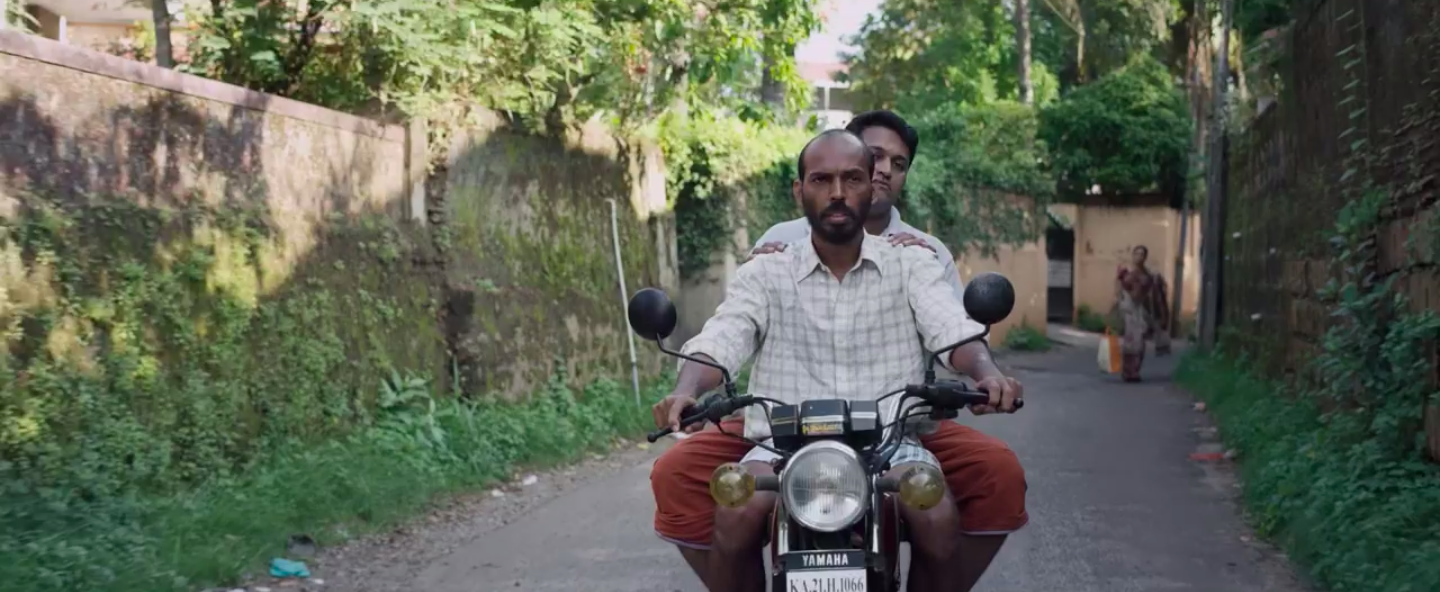
Shiva and Hari in Garuda Gamana Vrishabha Vahana.
SC: Tell me about the beginnings of GGVV. How did the story come to you?
RBS: I had seen a Devi Mahatme Yakshagana where the goddess gives birth to Brahma, Vishnu and Maheshwara and assigns them three roles, after which they start fighting amongst themselves. I saw it for the first time when I was in the fifth or sixth standard. It made me wonder if ego also exists among the gods and why human beings are so violent. The story of GGVV takes place around the Mangaladevi temple, from which Mangalore gets its name. It was a self-exploration to see myself through different characters, to see [for instance] how violent I am through Bhramaiah because he is such a simple man who becomes a demon without committing any act at all and does not suffer the guilt of it. He becomes responsible for the death of someone and then asks his wife on the phone if she has had dinner…
SC: I wanted to know your thoughts on the interest in mythology that has taken centre-stage for creators in the last few years. What do you think accounts for its continual draw and what made you want to go back to mythology for GGVV?
RBS: Mythology is where we all started. They were the first stories we heard as children, and they have remained and grown with us, so they will not go out of us. Going back to mythology creates certain experiences and emotions. These archetypal characters imprinted in us awaken the child that has heard the story.
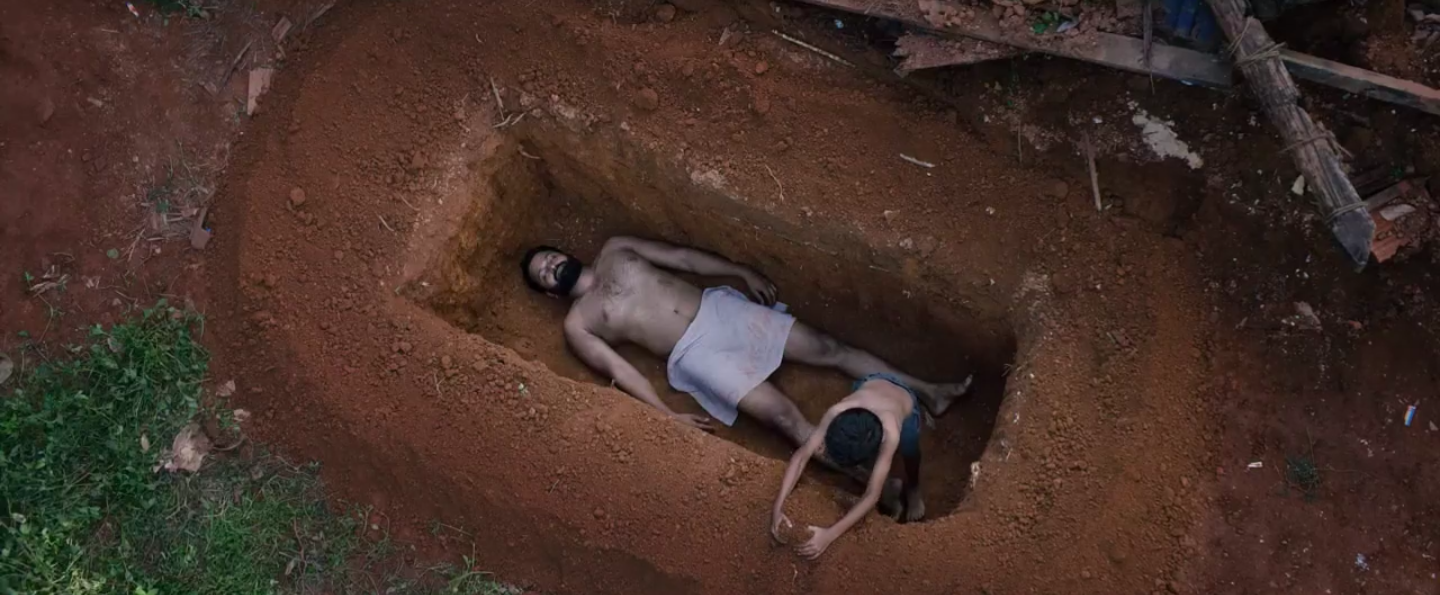
Still from Garuda Gamana Vrishabha Vahana.
SC: That leads me to my last question—could you talk about the ending of the film? Why did Hari and Shiva’s younger selves bury their older selves? Does it mark a return to innocence?
RBS: Love is deeper than the physical dimension. Only society, people and circumstances can corrupt these characters. [There is also a sense of] “What did you do with your life?” All one wants to do is stay a child with that love, so if you need to stay there, you need to bury your older selves.
To read more about Kannada cinema, read Satyavrat KK's features on Shankar Nag, Bengaluru as a city in Kannada films, and the slow decline of the industry in recent decades.
All images courtesy of Raj B. Shetty.




